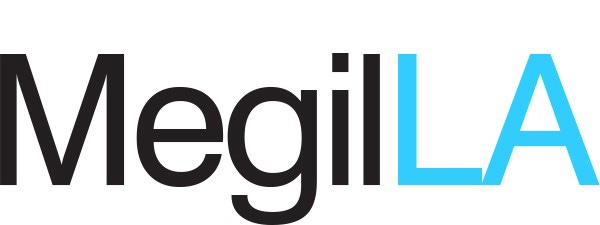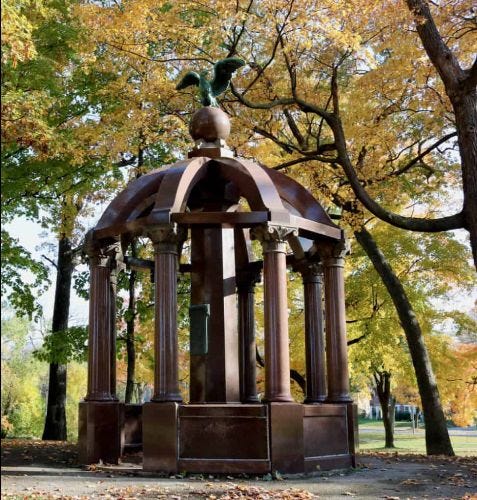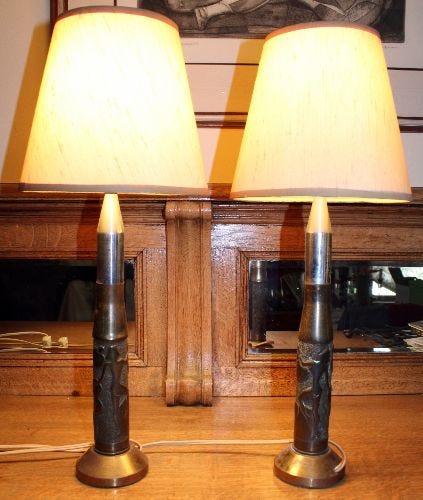Remembering our Heroes
A New Scroll of LA Jewish News
Folks,
When the Jewish Welfare Board published this poster in 1918, it was a call to American Jews to raise funds to support Jewish troops. “Two hundred and seventy-five specially trained field workers are doing the work of the Jewish Welfare Board in every camp and naval training station in this country,” said a story in the B’nai B’rith Messenger, a few days before the national “War-Work Campaign” kicked off. The workers were providing help through Jewish Board “Huts,” organizing Jewish prayer services, and visiting the men, “cheering them in moments of depression.”
I wish we had Jewish Board huts today. After experiencing several recent anti-Semitic incidents, including the scratching of large swastikas into the office windows of Ikar, it would be nice to have a hate-free place to go, and someone to lighten our darker thoughts.
Though I am not so sure if we are still the poster’s "Civilians"—on many days, I feel like a combatant— Memorial Day, helps to keep things in perspective. All those little U.S. flags at the Veterans cemeteries; mark the real heroes. in their memory, our job is to continue to thrive as a Jewish community, to protect our freedom of religion, and if we choose, identify openly as Jews, support Israel, and give meaning to their sacrifice.
Thank you to those readers who have become paid subscribers. I need those who have yet to pay to join them now. MegilLA receives no grants or institutional support. It depends on a pretty straightforward proposition: that readers will pay for good and creative journalism. To continue, I need your support. Please become a paid subscriber today.
Edmon J. Rodman
////\/\\\\
////\/\\\\
Remembering Private Stein
WW I Memorial, Bay View, Wisconsin. Photo Katherine Keller
Edmon J. Rodman
How do we remember the Jewish men and women who died for our country? Many of them are so long gone, and the traces of their lives so faint, that if it were not for draft and service records, we would never recall their names and lives.
Many of them died so young, just as their life was beginning to take form. Many of them died without children to carry on their memory. When they died in battle, they were not missing in action; only later would this happen.
In 1921, the American Jewish Committee issued a report that found that “about 250,000 Jewish soldiers served in the United States military during World War I, 40,000 of whom volunteered,” and “about 3500 Jews were killed in action or died of wounds.” Private Erwin Edward Stein of Los Angeles was one of them.
When Private Stein of Los Angeles sailed for France from New York aboard the ship Armagh in July of 1918 to fight in the war to end all wars, WWI, he was almost 26, and unmarried.
Shortly after the passage of the Selective Service Act in May of 1917, Erwin had enlisted. At that time his residence was 126 E. 45th Avenue. In September, he reported for training at Camp Lewis in Tacoma, Washington.
Before enlisting, Erwin worked as a printer for his older brother Albert, who was president of the Angelus Paper Box Company. Started in 1912, and located on North Broadway, it was located in the midst of where Chinatown is today.
According to letters sent to Albert, upon arrival in France, as part of the 316th Engineers, Erwin saw active service almost from the first day.
According to his draft card, Erwin was of medium height and build with hazel eyes and light brown hair. Born in 1891 in Milwaukee, he was the youngest of nine brothers and sisters. His parents, Louis, a machinist, and Emilia Stein had immigrated from Germany to the U.S. in 1882.
Sometime in the early 1900s, Erwin and Albert had moved to Los Angeles. Besides some news clippings about the paper box company, which expanded after the war and continued into the 1950s when it was sold for over $3.6 million, not much remains of Erwin’s life in Los Angeles.
However, there is a record of his time in local bowling alleys. The Los Angeles Herald used to run an occasional column on a businessman’s bowling league, and among the reports are several scores of the Stein’s team from the paper box company. Erwin averaged around 170, and in one game he bowled a 199; pretty good.
During the war years, the B’nai B’rith Journal, regularly reported on the “Jewish boys of Los Angeles who have given their lives for their country, their principles and for the freedom.” In that column, on November 29, the paper reported that Stein had died on October 2.
Earlier, in November, both Los Angeles Times and Herald had reported Stein’s death among the list of war casualties they often published. Stein, “was one of the first Southland men to go into training at Camp Lewis,” said the Times.
Stein was killed in action during the Meuse-Argonne Offensive, a key battle, in which the American Expeditionary Force helped to bring the war to an end. In that battle, in the 91st Division of which the 316th was part, over a thousand men were killed and over 3900 were wounded.
He was buried in Meuse-Argonne Cemetery. A Star of David marker bears his name. Stein's sacrifice, and the deaths of all those U.S. servicemen who died during the offensive were honored at the Montfaucon Monument, seven miles south. The monument, ordered by General John J. Pershing, is a massive 200-foot-high Doric column topped by a statue symbolic of liberty.
In Los Angeles, there is no WWI memorial which remembers Stein. But in Bay View, near Milwaukee, where Erwin Stein grew up, is a monument which includes his name. Located in a park, it is “dedicated to the memory of the patriots of our community who gave their last full measure of devotion in the world war.”
Located under a cupola, the monument seems a peaceful place for his memory to be a blessing, and a reminder of the cost of our freedom.
(Since Erwin Stein came from such a large family, I wondered if a child had been named in his memory. If a reader knows any more about him, please let me know.)
////\/\\\\
Just got back…
In the days after what came to be known as WWI, the Jewish Welfare Board distributed post cards like this one to help Jews in the Armed Forces to let their friends and family know they were home; safe and ready to return to civilian life.
////\/\\\\
Lamps of war and peace
Not exactly spears turned into a pruning hooks, these lamps, made by my father Murray Rodman during his service in the US Navy during WWII, clearly illuminate the Prophet Joel’s vision of war materials being transformed into useful peacetime objects. Fashioned from spent brass shell casings, they are also examples of trench art: decorative objects made by soldiers during wartime.
Over a half a million Jewish men and women served in the U.S. Armed Forces during World War II. Jewish war casualties were 38,338, with 11,000 killed, 7,000 of those during combat. During a campaign off the Philippines, my father sustained a severe wound to his knee, from which he eventually recovered, though it always affected his mobility. During his life in peacetime, the lamps found a home on his desk, where they added light to his work and memories.
////\/\\\\
Seen on the way: Memorial Library
While sitting in the light filtering through the large multi-pained stained glass window of the Memorial Library, I noticed a list of 20 names ornately worked into the glass. An inscription informed me that the window was “Dedicated to the alumni of the Los Angeles High School [located across the street] who died in the World War.” In 1930, the year the library opened, the students of L.A. High had commissioned the stained glass for the library that formally opened on April 29, 1930. Reading down the list, my eyes rested on one name: Joseph L. Kauffman. I found that Sergeant Kauffman, who was Jewish, had grown grown up not far from LA High. He had joined the 91st Division of the American Expeditionary Force, and died September 26th, 1918 at the age of 22, in the battle of Argonne Forrest in France. He was brought home and buried at Home of Peace. May his memory be for a blessing. Read more about Kauffman HERE.
////\/\\\\










